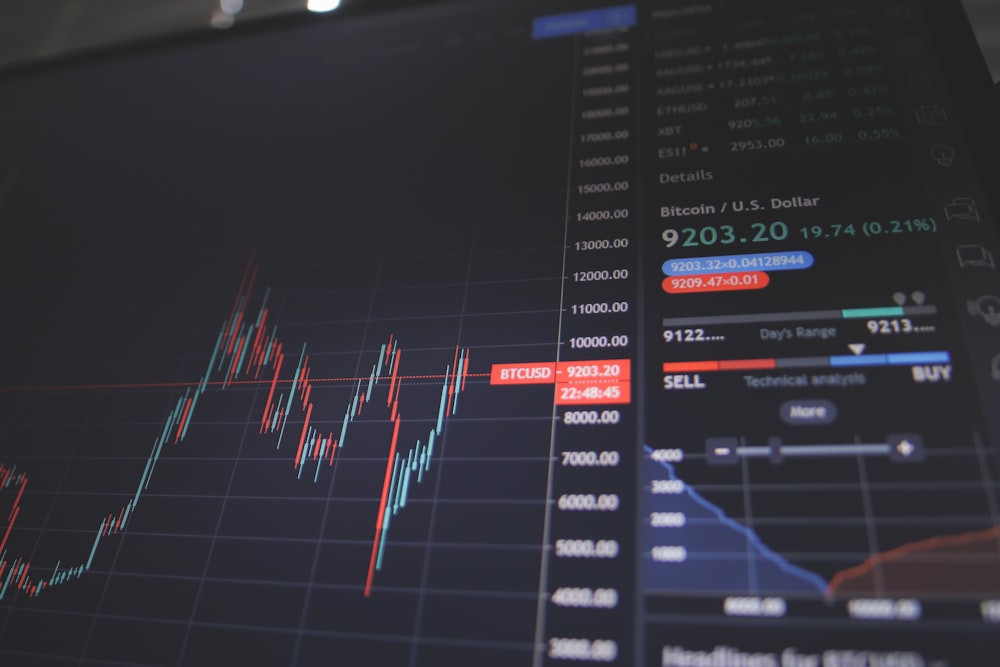Stochastic Calculus for Quants | Overview
Expanded overview, most important tools, assumptions and limitations
Introduction
This article will hopefully give you an overview of one of the most essential mathematical concepts in stochastic calculus and therefore the basis of quantitative finance. It will surely clarify certain assumptions among many popular financial models around derivatives and risk analytics of which understanding will definitely prove useful on you further journey in Finance world.
NOTE: This as well as the next week articles will be quite math heavy, if you don’t fully understand it don’t worry, after stochastic calculus we will come back to more entry level stuff
Firstly, to give you a bit of overview, stochastic calculus is a mathematical framework used by quantitative analysts to model and analyse random processes. It is an essential tool in quantitative finance and is used to price financial derivatives, analyse risk and therefore, in general to make investment decisions. In this article, let’s dive together into the basics of stochastic calculus, its applications, its limitations, and its criticism. Bear in mind this is the first more math-heavy article on this blog so bare in me because ability to understand stochastic calculus lies in very foundation of quantitative analyst skillset and is necessary to go further in understanding the insights of models like Black and Scholes or going further likes of Monte Carlo Simulation (which we will face next week) and many, many more.
What is Stochastic Calculus?
In short, Stochastic calculus is a branch of mathematics that deals with modelling and analyzing systems that change randomly over time. It involves the use of stochastic differential equations (SDEs) to describe the behaviour of complex systems that have random components. Differential equation to put simply is equation that relates the rate of change of a variable to its current value, let’s take an example, change in velocity of an object depends to its current positions as well as the forces that act on it. SDE is not much different, but it includes random component into the rate of change factor.
The idea behind stochastic calculus is to model the behaviour of a system over time, considering its random fluctuations, yes random is the keyword here. The most important tools used in stochastic calculus undeliberately include is Brownian motion and Itô Calculus, which we will cover in moderate level of detail in this article.
Stochastic calculus is used in a variety of applications, including:
Pricing Financial Derivatives: Stochastic calculus is used to price financial derivatives, such as options and futures contracts. The Black-Scholes model, which is one of the most widely used models for pricing options, is based on stochastic calculus:
Risk Analysis: Stochastic calculus is used to analyze risk in financial markets. It allows quants to calculate the probability of different outcomes and to design trading strategies that minimize risk.
Investment Decisions: It is also used to make investment decisions in financial markets. Quants use stochastic models to identify opportunities and to determine the optimal allocation of capital.
That concludes the introduction, now that we have general overview sorted, let’s head towards a fraction of math behind it to keep a bit more back of a house idea on how it influences financial models.
In order to do so, we first need to model the properties on the underlying. Amongst many methods Stochastic Calculus’ so called Brownian Motion model which includes variables such as asset's volatility and drift (trend). Those can be estimated from historical data.
Brownian Motion
Stochastic calculus is divided into tools which are essential in building a models, the most renowned and important tool in stochastic calculus is undoubtedly Brownian motion.
Brownian motion (aka Wiener process) is a mathematical model of a particle moving randomly in space. It was first discovered by the botanist Robert Brown in 1827, who observed that pollen grains suspended in water moved in a random fashion. Florist’s model, later developed by mathematician Norbert Wiener, is used to structure many natural phenomena, including the movement of molecules in a fluid, but also the fluctuations of a stock price, and the evolution of interest rates. Mathematic is everywhere as my high-school teacher used to said.
Here's the Brownian Motion formula:
dB(t) = sqrt(dt) * Z
Where:
dB(t) = increment of the Brownian Motion process at a given time t
dt = small time interval
Z = standard normal random variable, meaning variance =1 and mean = 0
In plain English, at each small-time interval dt, object makes a random jump which is proportional to the square root of the time interval, meaning the bigger the interval the random jump is expected to be higher, which may be rather intuitive but also most importantly, size of the jump is determined by a random normal variable, which is the stem of our stochastic flower.
Going further with our flower comparison, Brown’s petals, ie. conclusions are:
Independent Increments: The increments of the process at different times are independent of each other. In other words, the future behavior of the process does not depend on its past behavior.
Continuous Paths: Brownian motion has continuous paths, which means that the object moves smoothly and does not make sudden jumps.
Normally Distributed Increments: The increments of Brownian motion at different times are normally distributed. This means that the probability distribution of the particle's position at any time t is also normally distributed, if it sounds similar to Black and Scholes model then you got the link here.
However Brownian motion alone is far inappropriate choice to model financial markets. As you can conclude from the formula, Brownian motion alone would model negative stock prices. Therefore, in reality the way to preserve some of the stochastic properties while connecting or adding those to models that we want to create. In order to to that Brownian source of risk can be added into Ito processes which woud enable to do exactly that.
Itô Calculus
Stochastic calculus also involves the use of Itô calculus, which is a branch of calculus that deals with stochastic integrals. Itô calculus is used to solve stochastic differential equations (SDEs) which I was describing before, and to calculate the expected values of random variables. It is a powerful tool that allows to model and analyze complex systems that change randomly over time.
In order to dive deeper into Itô’s model, we need to come back for a second to SDE’s that is to it’s formula.
Formula for SDE can seem a little bit overwhelming but do not worry, we will go through that in detail:
dX(t) = μ(t, X(t)) dt + σ(t, X(t)) dB(t)
μ(t, X(t)) is the drift coefficient that determines the deterministic component of the process, also known as drift trend. Simply put, that’s the expected rate of change in the process. The drift coefficient plays an important role in determining the long-term behaviour of a stochastic process. Quite intuitively, if the drift coefficient is positive, trend is expected to increase, if negative trend decreases and if zero trend will
σ(t, X(t)) is the diffusion coefficient that determines the random component of the process otherwise known as volatility term. The diffusion coefficient determines the short-term behaviour of a stochastic process.
B(t) is a Brownian motion or Wiener process.
dB(t) is an increment of the Brownian motion, we were going through before therefore, our standardized measure of random jump.
Once we know general SDE formula we can look further ont Geometric Brownian Motion (GBM) that is a form of SDE that describes random motion of a variable over time. And here we have connection between maths and the stock market, as it GBM is used directly to model fluctuations.
GBM formula:
dS = μS dt + σS dW
Where:
dS is the change in the stock price over a very small time period, dt
μ is the expected return of the stock
σ is the volatility of the stock
dW is a Wiener process (also known as a Brownian motion), which represents the randomness or uncertainty in the stock's price movements.
GBM assumes that the logarithm of the stock price follows a random walk with a drift and a volatility. The drift parameter μ represents the expected average return of the stock over time, while the volatility parameter σ represents the degree of uncertainty or randomness in the stock's price movements.
Essentially, GBM suggests that the stock price is more likely to increase or decrease if the stock has a higher degree of volatility, and if there is a positive drift in the expected return, then the stock price will likely trend upwards over time. However, GBM does not take into account any external factors that may affect the stock price, such as news, events, or changes in market sentiment.
Now that we have SDEs and GBE covered we can go step ahead and see what Itô Calculus’ insights are. The core part of Itô calculus is definitely Itô lemma. Relevant lemma states that for a smooth function f(t, X(t)) of a stochastic process X(t), the differential of f(t, X(t)) can be written as:
df(t, X(t)) = (∂f/∂t) dt + (∂f/∂x) dX(t) + (1/2)(∂^2f/∂x^2)(dX(t))^2
where (∂f/∂t) and (∂f/∂x) are the partial derivatives of f(t, X(t)) with respect to time t and the stochastic variable X(t), respectively, and (∂^2f/∂x^2) is the second partial derivative of f(t, X(t)) with respect to X(t).
Power and significance of Itô lemma lies in the fact that it can work as the connector between SDE and number of Stochastic processes including described before Brownian motion as well as mean-reverting processes, and stochastic volatility models.
Limitations and Criticism
Despite its many applications, stochastic calculus has some limitations and has been subject to criticism. It is undoubtedly a powerful mathematical tool in modelling and analyzing complex systems that have random components. However, like any mathematical framework, stochastic calculus has its limitations and criticisms. Here are some of the most notable ones:
Market Efficiency Theory: Market Efficiency Theory is one of the most well-known was and it burns the discussion on the lecture halls over couple of decades now. In very short, efficiency market theory assumes that markets are efficient and that prices reflect all available information. This is not always the case, as markets can be influenced by factors such as market sentiment and irrational behavior.
Limited Predictive Power: While stochastic calculus can be used to model and analyze systems that have random components, it cannot predict the future behavior of a system with perfect accuracy. The random components of the system may be unpredictable, and there may be other factors that are not accounted for in the model. As a result, stochastic calculus should be used as a tool for making informed predictions and not as a way of knowing the future with certainty.
Overfitting: Stochastic calculus can be prone to overfitting, which occurs when a model is overly complex and fits the training data too closely. This can lead to poor performance on new, unseen data. To avoid overfitting, it is important to use appropriate model selection and validation techniques.
Assumptions and Simplifications: Like any mathematical model, stochastic calculus makes certain assumptions and simplifications to make the problem tractable. These assumptions may not hold in all situations, which can limit the applicability of the model.
Computational Complexity: complex models can be computationally expensive to solve, especially when the system being modelled is complex or has high dimensionality. This can limit the speed and scalability of the model and make it difficult to apply to large-scale problems.
Black Box Nature: Stochastic calculus models can sometimes be difficult to interpret or explain, especially when they are highly complex or involve many variables. This can limit the ability of stakeholders to understand and trust the model.
Human Error: Finally, models in this calculus are only as good as the data and assumptions that go into them. Human error in data collection, data processing, or model specification can lead to incorrect or misleading results.
In summary, while stochastic calculus is a powerful mathematical tool, it has its limitations and criticisms, and it should be used with care and caution. To mitigate these limitations, it is important to use appropriate model selection and validation techniques, to be aware of the assumptions and simplifications of the model, and to carefully consider the quality of the data and assumptions that go into the model.
Conclusion
Stochastic calculus is a powerful tool that allows quants to model and analyse complex systems that change randomly over time. It is an essential part of quantitative finance. It can be used to price financial derivatives, analyse risk, and make investment decisions. However, it has some limitations and has been subject to criticism. However, despite its flaws, stochastic calculus remains an important tool in quantitative finance and is likely to remain so for the foreseeable future. If you made it that far, there is solid chance that you will enrich your understanding of the financial models you will see in the future, math behind stochastic calculus may be a bit overwhelming (at least it was for me) however, its understanding really pays off and it is worth to sacrifice evening or two to get your head around that. In the next article we will look a bit more closely on Risk Free pricing with use of Sochastic Calculus whochwill expand on today’s broad introduction.
Thank you for your time and subscribe my blog to not miss out!
Stay tuned and see you next week!
Tomasz





